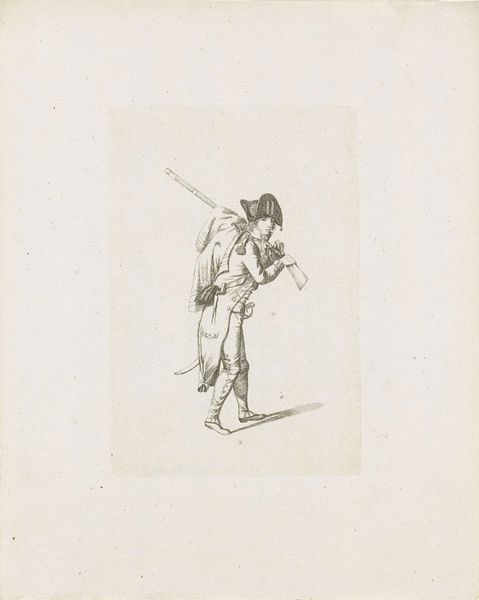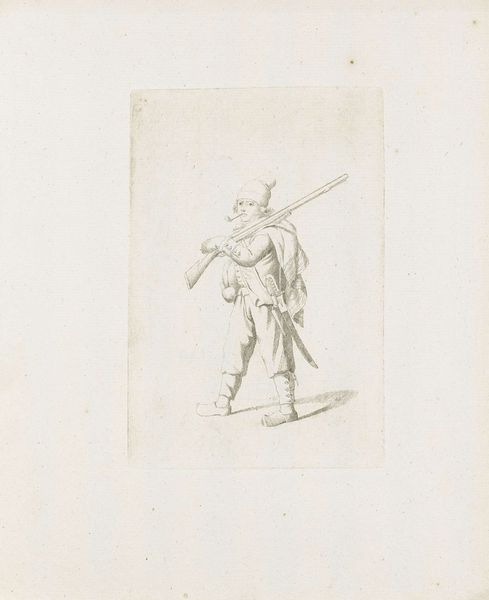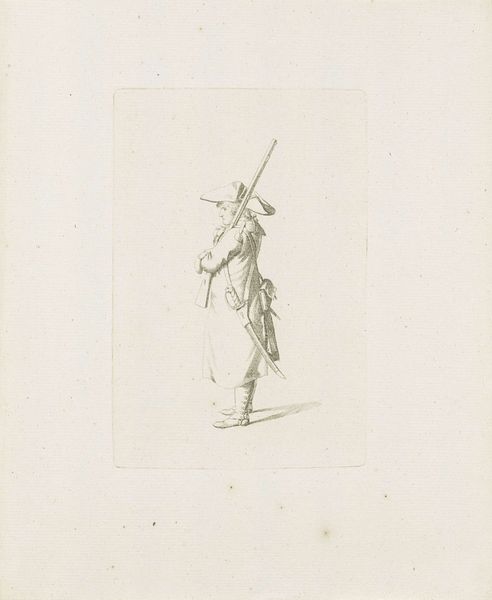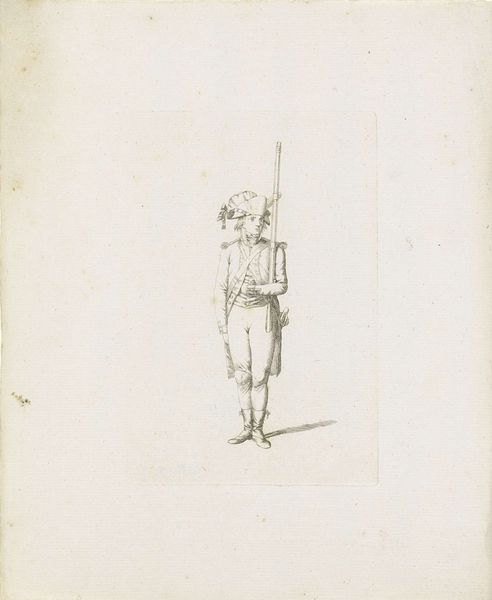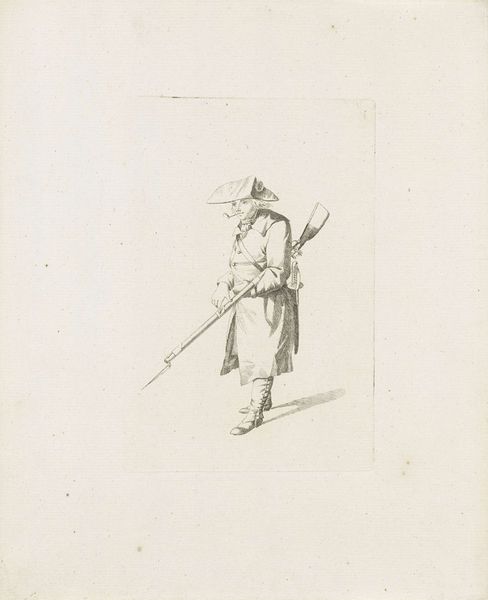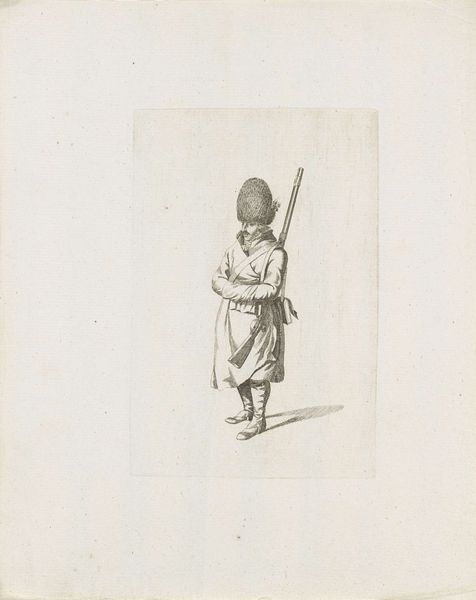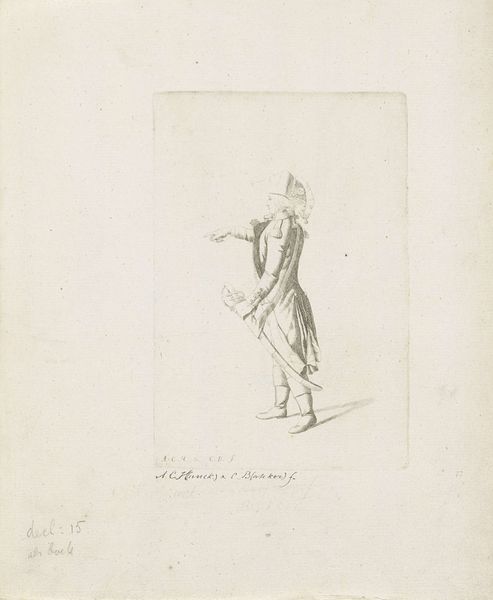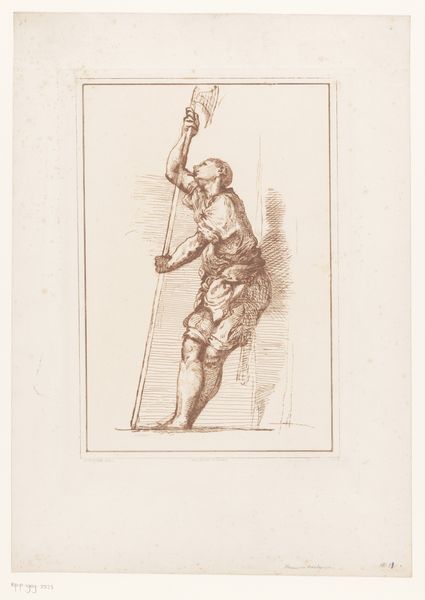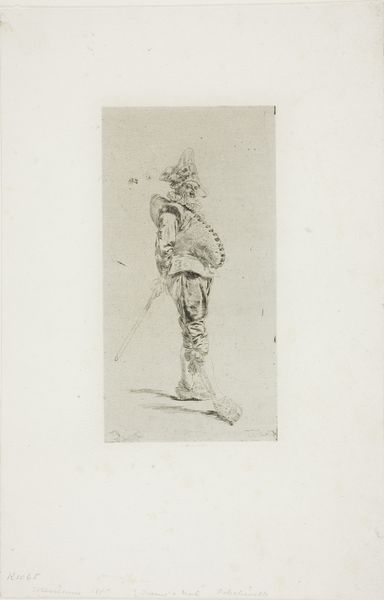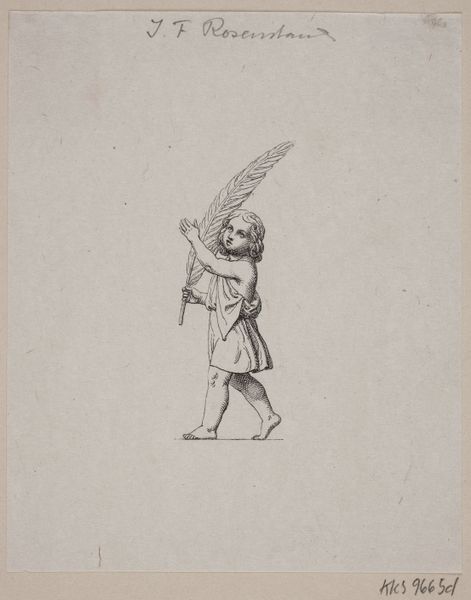
drawing, pencil
#
portrait
#
drawing
#
amateur sketch
#
light pencil work
#
pencil sketch
#
figuration
#
personal sketchbook
#
idea generation sketch
#
ink drawing experimentation
#
romanticism
#
pencil
#
costume
#
sketchbook drawing
#
pencil work
#
history-painting
#
academic-art
#
sketchbook art
#
initial sketch
Dimensions: height 155 mm, width 105 mm
Copyright: Rijks Museum: Open Domain
Curator: This delicate pencil drawing is titled "Standing French Soldier," created around 1795 by August Christian Hauck. It is currently held in the Rijksmuseum collection. Editor: It feels fragile. There's something almost vulnerable about this solitary figure viewed from behind. The lightness of the pencil work makes him seem transient, like a ghost of the past. Curator: Indeed. Hauck’s artistic output was largely influenced by the socio-political climate of the late 18th century. Remember, this was the period of the French Revolution, and military figures became symbolic within both public and artistic spheres. Editor: I think there is an interesting power dynamic implied in this rendering, one that touches on gender, race and identity. Considering the history of marginalized figures in the army who were often relegated to service and unseen, the piece may function as a testament of perseverance. Curator: That's a valid point to explore, especially considering the shift from aristocratic military structures towards more national armies. This artwork can also be contextualized by Hauck’s practice: his drawings usually appear like initial studies for paintings or prints. It offers a glimpse into his process. Editor: It strikes me, too, as deeply humanizing. Away from the battlefield and heroic portrayals, it seems to subtly critique the glorification of war by simply depicting a soldier as just a person bearing the weight of duty. Curator: I agree. There is definitely an anti-heroic quality, typical of much Romantic-era art. It invites us to consider the individuals behind the uniforms, especially within times of great sociopolitical turbulence, not just in the context of then, but within our contemporary societies, too. Editor: Absolutely. Seeing art through these intersectional lenses really compels us to think about not just what we are seeing, but also who gets seen, and whose stories are told. Curator: Examining Hauck's study today offers a lens through which to interpret both past representations of soldiery and present day military conflicts and imagery, as well. Editor: Yes. By emphasizing the emotional resonance and complex humanity within the figure depicted in Hauck's drawing, we challenge viewers to actively question their assumptions.
Comments
No comments
Be the first to comment and join the conversation on the ultimate creative platform.

